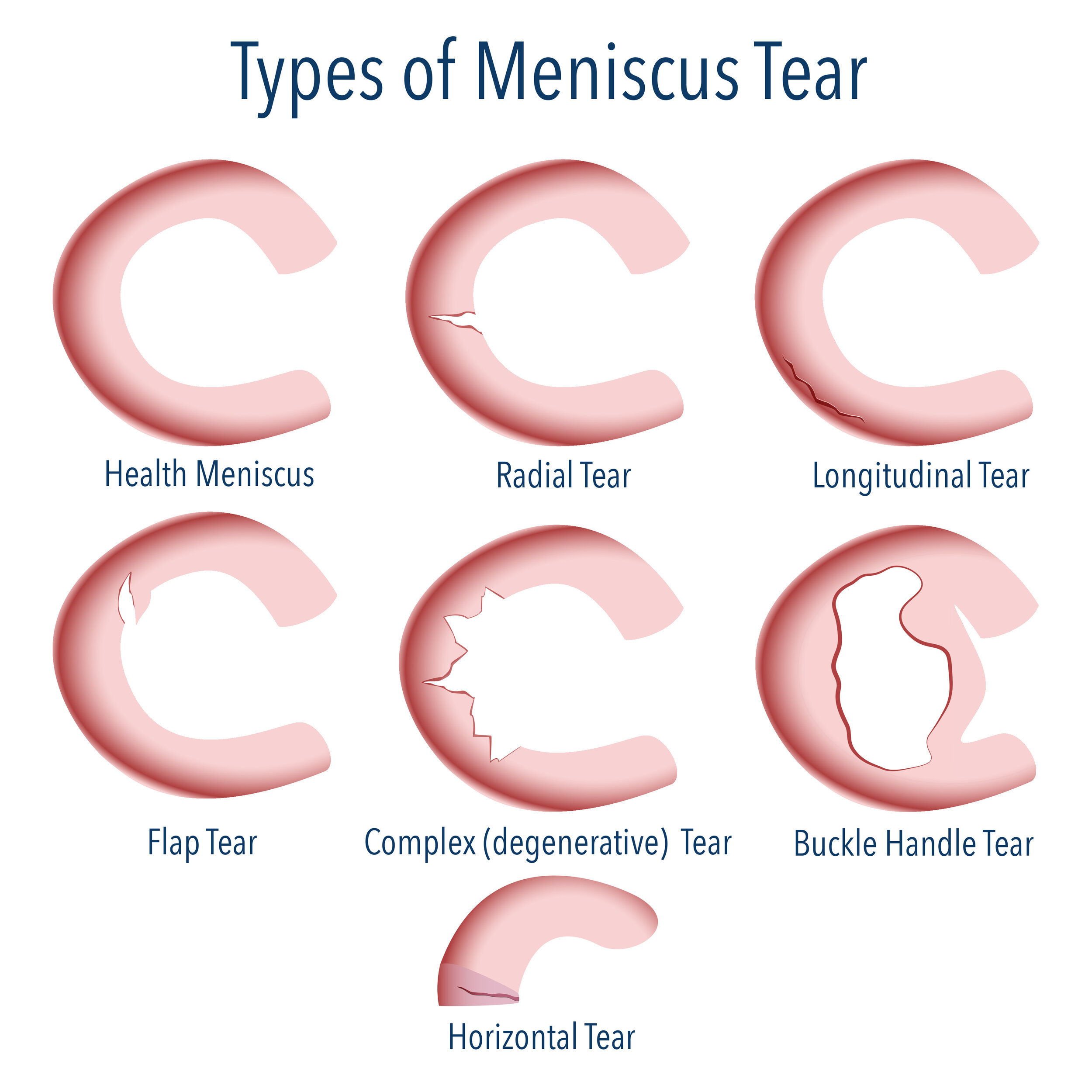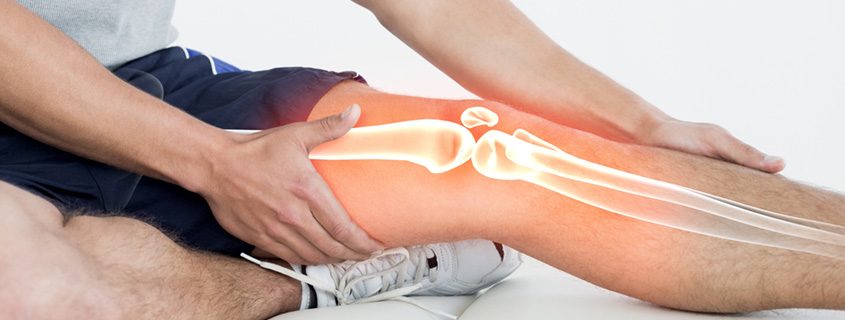Understanding Torn Meniscus

The meniscus is a C-shaped piece of cartilage that acts as a shock absorber in the knee joint. It cushions the bones and helps distribute weight evenly. A torn meniscus occurs when this cartilage is damaged, often due to a sudden twist or impact.
Anatomy and Function of the Meniscus
The knee joint is a complex structure, and the meniscus plays a crucial role in its stability and functionality. There are two menisci in each knee: the medial meniscus on the inner side and the lateral meniscus on the outer side. They are made of tough, rubbery cartilage that helps to:
* Absorb shock: The menisci act as cushions between the femur (thigh bone) and the tibia (shin bone), reducing the impact of weight-bearing activities.
* Distribute weight: By spreading the load over a larger area, the menisci help to protect the knee joint from excessive stress.
* Improve stability: The menisci contribute to the overall stability of the knee joint by limiting excessive movement.
Types of Meniscus Tears
Meniscus tears can be classified based on their location, shape, and severity. Some common types include:
* Horizontal tear: This type of tear occurs across the width of the meniscus.
* Vertical tear: This type of tear runs along the length of the meniscus.
* Radial tear: This type of tear is a combination of horizontal and vertical tears.
* Degenerative tear: This type of tear occurs due to wear and tear over time, often in older individuals.
Causes of Meniscus Tears
Meniscus tears can occur due to various causes, including:
* Sports injuries: Activities involving twisting, pivoting, or sudden impact, such as football, basketball, and skiing, can put stress on the meniscus, leading to tears.
* Direct impact: A direct blow to the knee, such as from a fall or car accident, can also damage the meniscus.
* Age-related wear and tear: Over time, the meniscus can become thinner and more prone to tearing, especially in older individuals.
* Underlying conditions: Certain medical conditions, such as osteoarthritis, can increase the risk of meniscus tears.
Symptoms of a Torn Meniscus
The symptoms of a torn meniscus can vary depending on the severity of the tear. Some common symptoms include:
* Pain: A sharp pain in the knee, especially during twisting or weight-bearing activities.
* Swelling: Swelling in the knee joint, often accompanied by stiffness.
* Locking or catching: A feeling that the knee is locked or catching, making it difficult to move.
* Clicking or popping: A clicking or popping sound when bending or straightening the knee.
* Instability: A feeling of instability or giving way in the knee.
Activities That Can Lead to a Torn Meniscus
As mentioned earlier, certain activities are more likely to lead to a torn meniscus. These activities often involve sudden twisting or impact forces on the knee joint. Here are some examples:
* Sports: Football, basketball, skiing, tennis, and other sports that involve pivoting, jumping, or landing with force on the knee.
* Everyday activities: Squatting, kneeling, and lifting heavy objects can also put stress on the meniscus, especially if done incorrectly.
* Accidents: Falls, car accidents, and other traumatic events can lead to a torn meniscus.
Diagnosis and Treatment Options

A torn meniscus is a common injury that can occur in the knee. It is often caused by a sudden twisting or impact to the knee. Diagnosis of a torn meniscus involves a comprehensive evaluation of the patient’s symptoms, medical history, and physical examination. Imaging tests like MRI are also used to confirm the diagnosis and assess the extent of the tear.
Diagnostic Procedures
To diagnose a torn meniscus, doctors typically follow these steps:
- Physical Examination: The doctor will examine your knee, checking for swelling, tenderness, and range of motion. They will also perform specific tests to assess the stability of your knee and identify the location of the tear.
- Imaging Tests:
- X-ray: While X-rays cannot directly visualize the meniscus, they can rule out other conditions, such as fractures or arthritis.
- MRI (Magnetic Resonance Imaging): An MRI is the most effective imaging test for diagnosing a torn meniscus. It provides detailed images of the soft tissues in your knee, including the meniscus, ligaments, and cartilage. This allows the doctor to identify the location, size, and severity of the tear.
- Arthroscopy: This is a minimally invasive surgical procedure that involves inserting a small camera and surgical instruments into the knee joint. Arthroscopy can be used to diagnose a torn meniscus and, if necessary, repair it. It can also be used to remove loose fragments of cartilage or bone in the joint.
Treatment Options
Treatment for a torn meniscus depends on the severity of the tear, the patient’s age, activity level, and overall health. Treatment options include:
- Conservative Management: This approach focuses on reducing pain and inflammation, and restoring function to the knee. It may include:
- RICE (Rest, Ice, Compression, Elevation): This is the initial treatment for most knee injuries, including a torn meniscus. RICE helps to reduce pain, swelling, and inflammation.
- Pain Medication: Over-the-counter pain relievers, such as ibuprofen or acetaminophen, can help manage pain and inflammation. In some cases, stronger prescription pain medications may be necessary.
- Physical Therapy: A physical therapist can teach you exercises to strengthen the muscles around your knee, improve flexibility, and restore range of motion.
- Surgical Intervention: If conservative management is not successful, or if the tear is severe, surgery may be necessary. Surgical options include:
- Meniscectomy: This procedure involves removing the torn portion of the meniscus. It is typically performed arthroscopically, which is minimally invasive.
- Meniscus Repair: This procedure involves stitching the torn meniscus back together. It is usually only possible for tears that are located in the outer part of the meniscus and have good blood supply.
Benefits and Risks of Treatment Options
The benefits and risks of each treatment option should be carefully considered with your doctor.
| Treatment Option | Benefits | Risks |
|---|---|---|
| Conservative Management |
|
|
| Meniscectomy |
|
|
| Meniscus Repair |
|
|
Recovery and Rehabilitation: Torn Meniscus

Recovering from a torn meniscus involves a combination of rest, pain management, and physical therapy. The goal is to reduce pain, inflammation, and improve joint stability and function. The recovery process can vary depending on the severity of the tear, the individual’s age, and overall health.
Post-operative Care
After surgery, you will need to follow specific instructions from your surgeon to ensure proper healing. This may include using crutches, keeping your leg elevated, and applying ice to reduce swelling. You may also be prescribed pain medication and antibiotics.
Pain Management
Pain management is an important aspect of recovery. Your doctor may recommend over-the-counter pain relievers, prescription pain medications, or ice therapy. It is crucial to manage pain effectively to allow for proper physical therapy and rehabilitation.
Physical Therapy
Physical therapy is essential for regaining strength, flexibility, and range of motion after a meniscus tear. It typically involves a series of exercises that progressively increase in intensity.
Examples of Exercises, Torn meniscus
- Range of motion exercises: These exercises help to restore the full range of motion in your knee joint. Examples include ankle pumps, knee extensions, and knee flexions.
- Strengthening exercises: These exercises help to build strength in the muscles surrounding your knee joint. Examples include quadriceps and hamstring exercises, calf raises, and leg presses.
- Balance exercises: These exercises help to improve your balance and coordination. Examples include standing on one leg, walking heel-to-toe, and performing single-leg squats.
Importance of Structured Rehabilitation Program
Following a structured rehabilitation program is crucial for optimizing recovery and preventing future injuries. A physical therapist will design a program tailored to your individual needs and progress.
A torn meniscus is proper knackered, innit? You’ll be limping around like a right old granny if you don’t sort it out. Luckily, there’s loads of info out there on torn meniscus recovery , so you can get back to kicking a ball about or whatever you like.
Just make sure you listen to your body and don’t push yourself too hard, or you’ll be back to square one. A torn meniscus is a right pain, but with the right care, you’ll be back on your feet in no time.
Torn meniscus is a real pain, bruv. It’s like your knee’s gone all wobbly and you’re stuck on the sidelines. Imagine if jahmyr gibbs had to deal with that! He’s a beast on the field, so a torn meniscus would be a proper nightmare for him.
Thankfully, it’s not something he’s had to deal with, so he can keep on running rings around the competition.
